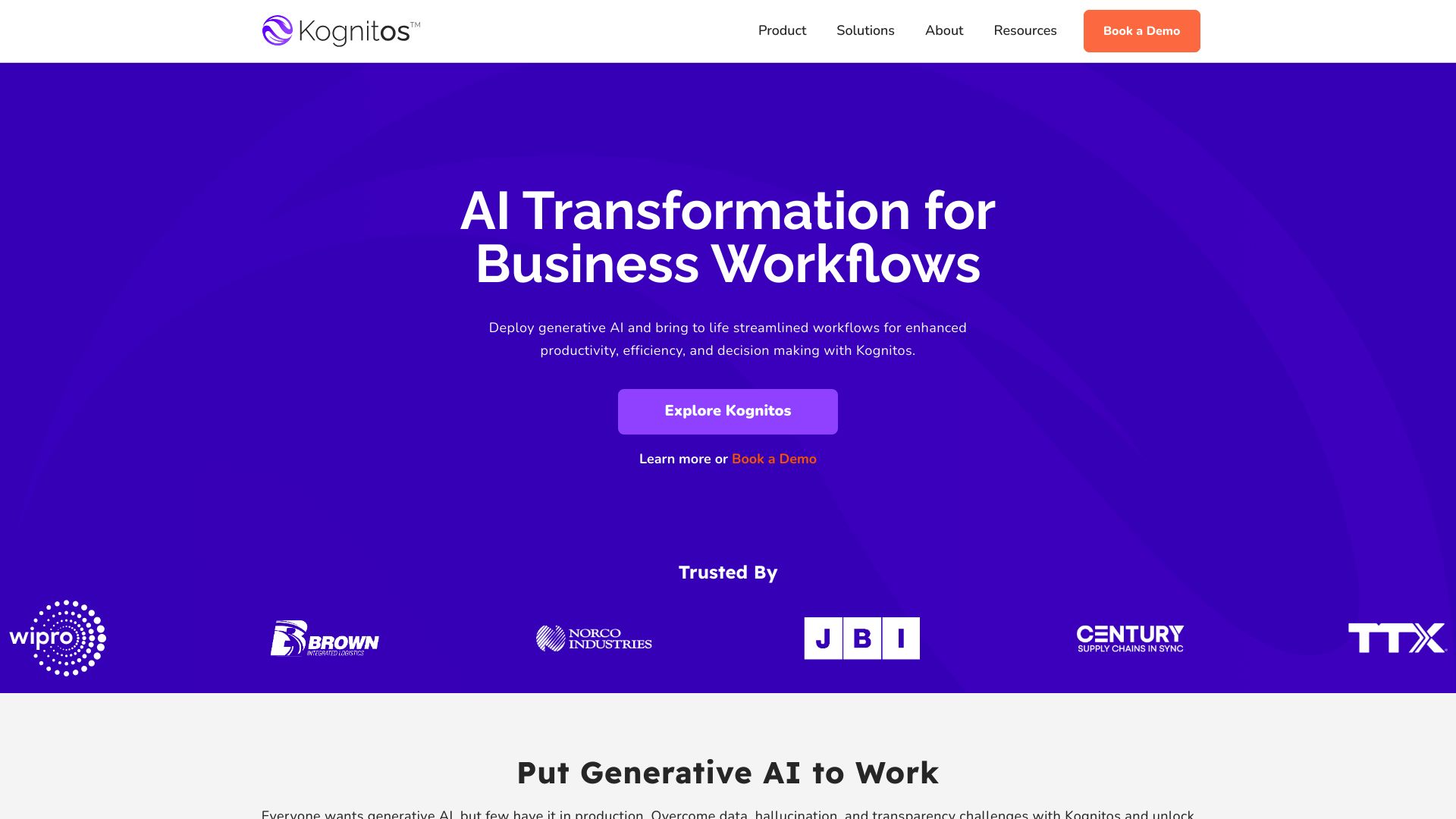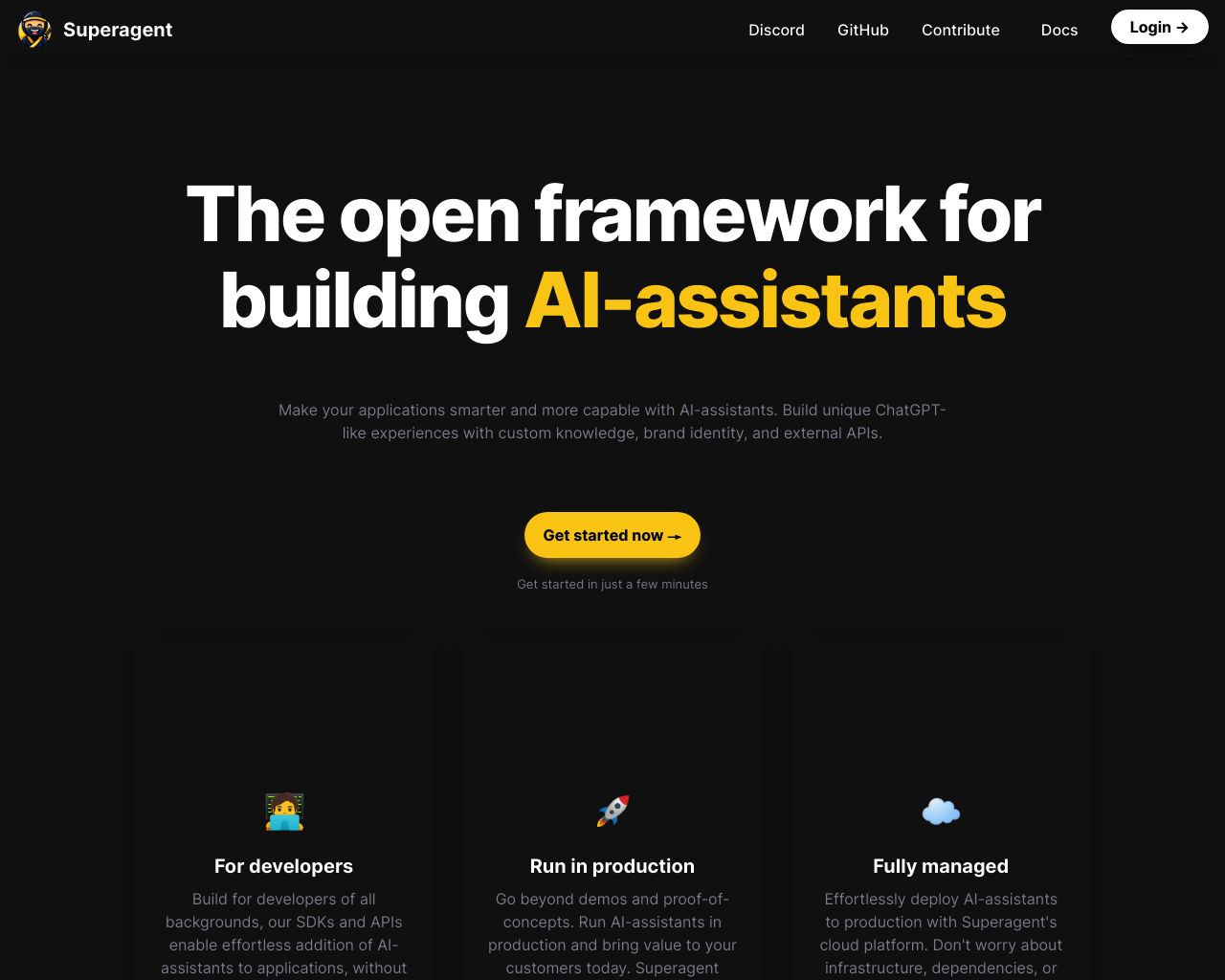Kognitos vs. Superagent: AI Automation Showdown
AI-powered automation transforms business processes, sparking fierce competition among platforms vying to deliver the most accessible and powerful solutions. This comparison explores Kognitos vs. Superagent, two innovative approaches to AI agent development, alongside SmythOS, our comprehensive platform that addresses their limitations. Kognitos revolutionizes automation through natural language processing, while Superagent offers an open-source framework for building custom AI assistants.
We’ll examine their core features, strengths, and weaknesses, highlighting how SmythOS combines ease of use with advanced capabilities to provide a versatile solution for businesses of all sizes. Whether you’re a developer seeking customization or a non-technical user looking for intuitive tools, this analysis will guide you through the landscape of AI automation platforms, helping you make an informed decision for your organization’s needs.
Kognitos Overview
Kognitos revolutionizes enterprise automation through natural language processing and AI. Kognitos empowers users to create complex automations using plain English, eliminating the need for traditional coding skills. This approach democratizes automation, making it accessible to a wider range of business users.


The platform leverages generative AI to interpret user instructions, handle exceptions, and execute tasks across various business systems. Kognitos excels in document processing, data manipulation, and integrating with popular enterprise applications like Salesforce. Its self-learning capabilities allow the system to adapt and improve over time, reducing the need for constant human intervention.
Kognitos empowers users to create complex automations using plain English, eliminating the need for traditional coding skills.
Kognitos stands out for its ability to manage complex business logic without requiring users to write code. The system maintains detailed audit logs, ensuring transparency and compliance. This feature proves particularly valuable for industries with strict regulatory requirements.
While Kognitos offers powerful automation capabilities, it may present a learning curve for users accustomed to visual programming interfaces. The platform’s reliance on natural language input, while innovative, might require users to adapt their approach to process design and implementation.
Kognitos integrates seamlessly with existing enterprise systems through APIs, supporting scalable cloud-based operations. This flexibility allows businesses to automate processes of varying complexity and volume, from small-scale operations to large enterprise workflows. The platform’s ability to handle exceptions through user interactions demonstrates its commitment to maintaining human oversight in critical decision-making processes.
Superagent Overview
Superagent empowers developers to build, manage, and deploy ChatGPT-like AI assistants through an open-source framework. This platform combines flexibility with ease of use, allowing for the creation of sophisticated AI agents without extensive machine learning expertise.


Superagent’s core offering centers on versatile AI agents equipped with memory features. These agents can handle both structured and unstructured data, process information efficiently, and integrate with various tools and APIs. The platform supports complex workflows by allowing sequences of specialized agents to tackle multifaceted tasks.
Superagent empowers developers to build, manage, and deploy ChatGPT-like AI assistants through an open-source framework.
The cloud platform provided by Superagent simplifies deployment, managing infrastructure dependencies and configuration. This approach accelerates the development process and reduces the technical overhead for users. Advanced debugging and tracing capabilities, powered by LangSmith, offer detailed insights into agent operations, facilitating quick issue resolution.
While Superagent excels in many areas, it lacks certain features found in some competitors. The absence of a visual builder may present a steeper learning curve for non-technical users. Additionally, the platform does not explicitly support multimodal interactions or multi-agent collaboration, which could limit its applicability in certain complex scenarios.
Superagent’s open-source nature, released under the MIT License, fosters a collaborative development environment. This approach allows for community contributions and customizations, potentially leading to rapid feature expansion and improvements. However, users seeking a more controlled, proprietary solution may need to consider alternatives.
Feature Comparison
Kognitos and Superagent offer contrasting approaches to AI agent development. Kognitos focuses on natural language automation, allowing users to create processes using plain English. This approach eliminates traditional coding requirements but lacks a visual builder, potentially limiting accessibility for some users. Superagent, conversely, provides a more developer-centric framework for building AI assistants, offering greater customization options but potentially requiring more technical expertise.
In terms of core components, Kognitos excels in handling business logic and document processing through its natural language interface. However, it lacks explicit support for multimodal interactions and multi-agent collaboration. Superagent, while offering powerful AI agent capabilities, also does not specifically mention multimodal or multi-agent features, highlighting a potential gap in both platforms.
Regarding security, both platforms emphasize data protection and user access control. However, Kognitos appears to have a more comprehensive approach to constrained alignment, ensuring AI actions align with business rules and human oversight. Superagent’s security features, while present, are less explicitly detailed in the available information.
Feature Comparison Table
| Kognitos | Superagent | SmythOS | |
|---|---|---|---|
| CORE FEATURES | |||
| Visual Builder | ❌ | ❌ | ✅ |
| No-Code Options | ✅ | ❌ | ✅ |
| Autonomous Agents | ✅ | ❌ | ✅ |
| Multimodal | ✅ | ❌ | ✅ |
| Work as Team | ✅ | ❌ | ✅ |
| SECURITY | |||
| Constrained Alignment | ❌ | ❌ | ✅ |
| Data Encryption | ✅ | ❌ | ✅ |
| OAuth | ✅ | ❌ | ✅ |
| IP Control | ❌ | ❌ | ✅ |
| COMPONENTS | |||
| Huggingface AIs | ✅ | ❌ | ✅ |
| Zapier APIs | ❌ | ✅ | ✅ |
| Classifiers | ✅ | ❌ | ✅ |
| Logic | ✅ | ❌ | ✅ |
| Data Lakes | ❌ | ❌ | ✅ |
| DEPLOYMENT OPTIONS (EMBODIMENTS) | |||
| Deploy as API | ✅ | ❌ | ✅ |
| Deploy as Webhook | ❌ | ❌ | ✅ |
| Staging Domains | ✅ | ❌ | ✅ |
| API Authentication (OAuth + Key) | ✅ | ❌ | ✅ |
| Deploy as Site Chat | ❌ | ❌ | ✅ |
| Deploy as Scheduled Agent | ✅ | ❌ | ✅ |
| Deploy as GPT | ❌ | ❌ | ✅ |
| DATA LAKE SUPPORT | |||
| Hosted Vector Database | ❌ | ❌ | ✅ |
| Sitemap Crawler | ❌ | ✅ | ✅ |
| YouTube Transcript Crawler | ❌ | ✅ | ✅ |
| URL Crawler | ❌ | ✅ | ✅ |
Best Alternative to Kognitos and Superagent
SmythOS stands out as a superior alternative to Kognitos and Superagent for AI agent development and deployment. Our platform offers a comprehensive solution that combines ease of use with powerful features, making it ideal for businesses of all sizes.
Unlike Kognitos and Superagent, SmythOS provides a visual builder that simplifies the creation of complex AI workflows. This drag-and-drop interface allows users to design sophisticated agents without extensive coding knowledge, democratizing AI development across organizations. Our no-code options further expand accessibility, enabling non-technical team members to contribute to AI initiatives.
SmythOS provides a visual builder that simplifies the creation of complex AI workflows… allowing users to design sophisticated agents without extensive coding knowledge, democratizing AI development across organizations.
SmythOS excels in its versatility and integration capabilities. While Kognitos focuses primarily on natural language automation and Superagent offers a developer-centric framework, our platform supports a wider range of use cases. We provide seamless integration with various APIs, AI models, and tools, allowing users to create tailored solutions for their specific needs. This flexibility ensures that SmythOS can adapt to diverse business requirements and evolving technological landscapes.
Security and scalability set SmythOS apart from competitors. We implement robust data encryption, OAuth authentication, and IP control features, addressing the growing concerns around AI security and data protection. Our platform also offers unparalleled scalability, supporting enterprise-level deployments while maintaining performance and efficiency. This scalability ensures that businesses can grow their AI initiatives without limitations.
SmythOS goes beyond basic AI agent creation by offering advanced features like multi-agent collaboration, autonomous operation, and multimodal interactions.
SmythOS goes beyond basic AI agent creation by offering advanced features like multi-agent collaboration, autonomous operation, and multimodal interactions. These capabilities enable the development of sophisticated AI systems that can handle complex tasks, adapt to changing environments, and provide more natural and efficient human-AI interactions. By choosing SmythOS, businesses gain access to a cutting-edge platform that drives innovation and positions them at the forefront of AI technology adoption.
Conclusion
Kognitos and Superagent offer unique approaches to AI-powered automation, each with distinct strengths. Kognitos excels in natural language-driven process automation, making it accessible for non-technical users. Superagent provides a flexible, open-source framework for developers to build custom AI assistants. Both platforms demonstrate the potential of AI in streamlining business operations, yet they also have limitations in areas like multimodal interactions and visual building tools.
While Kognitos and Superagent serve specific niches effectively, SmythOS emerges as a comprehensive solution that addresses the limitations of both. Our platform combines the ease of use found in Kognitos with the flexibility of Superagent, while adding crucial features like multimodal support, visual builders, and advanced deployment options. SmythOS’s drag-and-drop interface allows for intuitive agent creation, while our extensive integration ecosystem ensures compatibility with a wide range of tools and services.
SmythOS stands out for its versatility and power. We offer multi-agent collaboration, problem-solving capabilities, and support for various AI models, enabling businesses to tackle complex tasks efficiently. Our platform’s scalability, security features, and diverse deployment options make it suitable for enterprises of all sizes. Whether you’re looking to create chatbots, APIs, or scheduled agents, SmythOS provides the tools and flexibility to bring your AI vision to life.
Experience the future of AI automation with SmythOS. Explore our diverse range of AI-powered agent templates to jumpstart your projects, or dive into our comprehensive documentation to uncover the full potential of our platform. Ready to transform your workflow? Create a free SmythOS account and start building powerful AI agents today. With SmythOS, you’re not just adopting AI – you’re revolutionizing how you work.
Last updated:
Disclaimer: The information presented in this article is for general informational purposes only and is provided as is. While we strive to keep the content up-to-date and accurate, we make no representations or warranties of any kind, express or implied, about the completeness, accuracy, reliability, suitability, or availability of the information contained in this article.
Any reliance you place on such information is strictly at your own risk. We reserve the right to make additions, deletions, or modifications to the contents of this article at any time without prior notice.
In no event will we be liable for any loss or damage including without limitation, indirect or consequential loss or damage, or any loss or damage whatsoever arising from loss of data, profits, or any other loss not specified herein arising out of, or in connection with, the use of this article.
Despite our best efforts, this article may contain oversights, errors, or omissions. If you notice any inaccuracies or have concerns about the content, please report them through our content feedback form. Your input helps us maintain the quality and reliability of our information.
